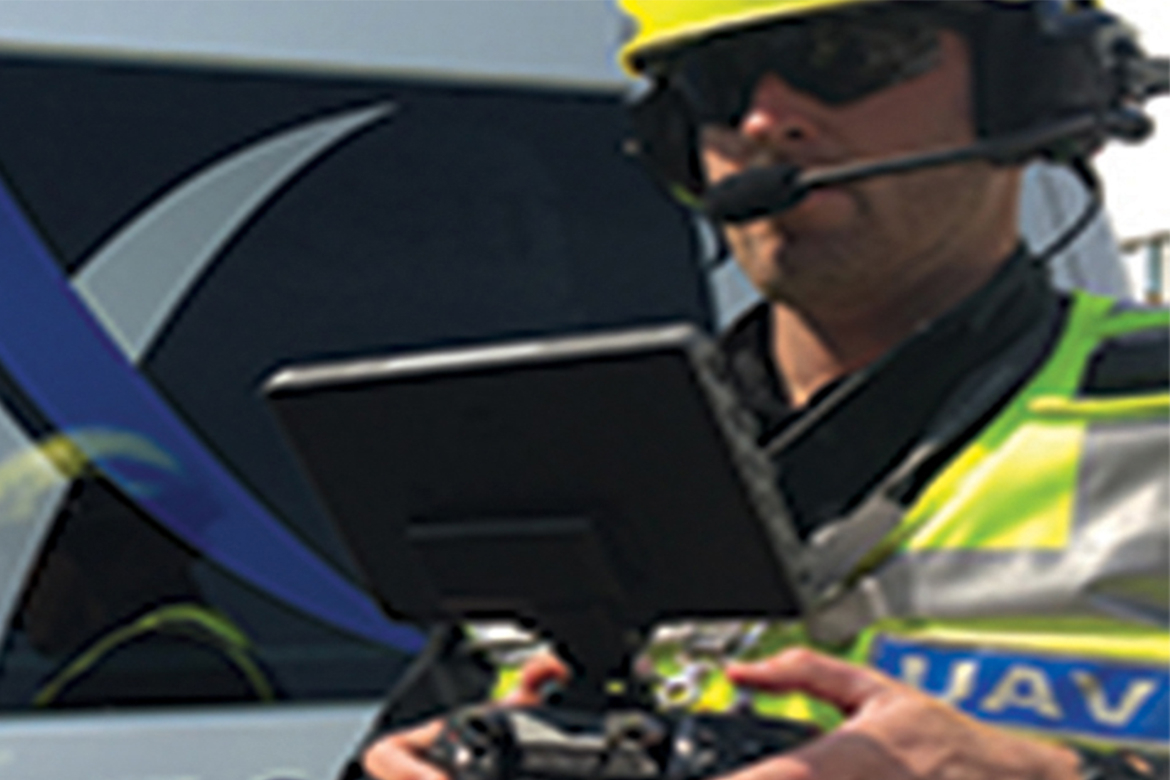What you need to know when selecting a drone security provider
A Drone (UAV) Security Team can provide greater situational awareness and deliver a superior level of holistic service at a fraction of the cost of a traditional amalgamation of CCTV, guarding presence and mobile response.
High risk environments or areas previously inaccessible to foot or mobile patrols can be included as routine patrols within the security plan, therefore significantly improving the security posture of a facility, site or estate. But how do you select an effective drone security provider?
There are a number of crucial aspects to consider. When looking to procure a drone security provider, be sure to ask them about the following aspects of their service:
- Experience of operating in similar environments to yours
- Capability to plan operations effectively
- Know-how to select the right equipment
- Proficiency to hold required licences, accreditations and insurance
Each of these areas is explained in more detail below.
Does the drone security service provider have the right experience?
Operating a drone within a security function is only as beneficial as the operator’s experience in providing protective services. Safe flights, working knowledge and smooth control over an aircraft is, of course, important, but the operator’s ability and judgement to quickly identify and escalate potential threats in situ is equally as essential. These skills are derived from operating in environments whereby the theatre can quickly and drastically change; therefore, the operators are proactively engaged in identifying suspicious behaviour and recognising the warning signs prior to such.
Can the drone security service provider plan operations effectively?
Drone security operations should be meticulously planned to minimise disruption and maximise effect on the security plan as a whole.
Planning may require CAA or NATS consultations, Enhanced Non-Standard Flight (ENSF) permissions or NOTAMs (Notice to Airmen) to be dispensed. Every detail of an operation should be evidenced and produced prior to deployment, including extensive risk assessments for effects on the team, the client and third parties.
Infrastructure to support drone security operations is likely to include: a clearly identifiable contained cordon, a dedicated position within a control room, undisturbed power supply and lighting to the LZ (Landing/Take-off Zone), data connection/IP connections and encoding, radio communication tower/repeater, and ATV/support utility vehicles.
Can the drone security service provider select the appropriate equipment?
The Drone Security Team should consider the practicality and range of equipment required in order to accomplish the objectives set out in the Service Level Agreement (SLA). They should be equipped to provide a realistic and holistic approach to service delivery and continuity; this should be measured against KPIs. For example:
- If operating in open areas of mass crowd congregation and/or areas of increased RF fratricide, the use of tethered systems should also be reviewed and objectively considered.
- Display screens should be of high resolution and illumination if operating during daylight hours, particularly when sun glare is high.
- Crew welfare is of paramount importance. The operators should have sufficient shelter, shade, comfort, provisions and a remote work station to operate from. Every consideration into this should be offered, e.g. utilising white light at night then proceeding outside into the darkness will temporarily restrict/blind a drone operator and observer’s vision, therefore delay/suspend operations and/or increase the likelihood of an accident due to pilot error.
- In terms of uniforms and PPE, service providers may wish to maintain their corporate brand awareness; however, it should still be considerate and practical. The potential risk of head and eye injuries form operating drones is significantly increased within the cordon area, primarily during take-off and landing stages. All mandatory PPE requirements must be adhered to.
Check your drone security service provider’s documentation
There are a number of licences, accreditations and insurances that drone security service provider should hold. Ask your potential providers about the following:
- The operator should hold a Permission for Commercial Operations (PfCO) issued by the Civil Aviation Authority (CAA). This will identify what permissions the operator must abide by.
- The operator should hold a SIA CCTV licence. A public space CCTV licence is required when either a fixed or PTZ system is used to actively monitor or track members of the public (on private and public land) to guard premises against disorder or to protect individuals from assault.
- It is recommended that the Drone Security Team be SIA-licensed to enable them to actively engage in security related incidents, if required. The nature of the task will determine what category of SIA licence is needed.
- It is best practice that where individuals are employed in an environment where the security and safety of people, goods or property is required, or where such security screening is in the public interest, then they should be vetted to BS7858.
- The operator should be registered with the Information Commissioner’s Office (ICO), conduct a comprehensive privacy impact assessment (justification for the use of a drone), make a concerted effort to inform and advise the public, and minimise collateral intrusion, as generally, drones are considered as highly privacy intrusive (the likelihood of recording individuals inadvertently is high).
- The operator should be fully insured for their scope of work. The nature of the task will determine the level of insurance cover required.
- The operator should ideally hold ISO9001 and a H&S accreditation such as CHAS to demonstrate professional standards are adhered to.
Derek Robinson, Operations Manager
See also:
Other articles in the Drones category in Security Technology
Counter the threat from drones to business
Drones: a threat to nuclear power stations?


